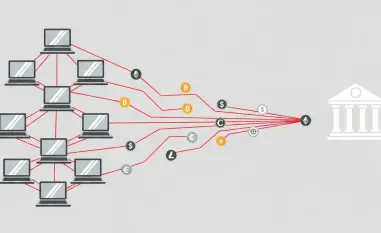In a significant development for cybersecurity in 2024, ransomware payments have seen a substantial decline of 35% compared to the previous year, according to recent data released by Chainalysis. Ransomware victims collectively paid $813.55 million in 2024, a noticeable decrease from the staggering $1.25 billion recorded in 2023. Initially, expectations were for a surge in payments due to high-profile ransoms, including a record $75 million paid to the nefarious Dark Angels gang. However, a collaboration between global cybersecurity efforts and strategic law enforcement actions has led to this unexpected downturn in ransomware settlements.
Effectiveness of Law Enforcement Actions
The decline in ransomware payments has been attributed to the successful law enforcement actions targeting prominent ransomware groups such as LockBit and BlackCat. These enforcement actions have created significant disruptions within the ransomware ecosystem, resulting in a fragmentation that has spurred the emergence of numerous smaller, less sophisticated ransomware operators. Consequently, these smaller actors have shifted their focus towards attacking small to mid-sized targets, rather than opting for high-stakes, large-scale operations.
During the second half of 2024, ransomware payments plummeted by 79%, a statistic highlighting the efficacy of law enforcement interventions. By disbanding major ransomware operatives, authorities managed to impose a substantial deterrent to large-scale ransomware activities. This has forced cybercriminals to reevaluate their operations and adapt to a rapidly evolving landscape where heightened vigilance and legal countermeasures erode their leverage and capacity to extort significant sums from victims. Consequently, this scenario has resulted in a significant decrease in the frequency and value of ransomware payouts.
Increased Resilience of Organizations
Enhanced cybersecurity protocols, better user awareness, and improved collaboration among international agencies have contributed to fortifying defenses against ransomware attacks. This trend marks a significant achievement in the ongoing battle against cybercriminal activities, pointing to a more secure digital landscape for the future.













